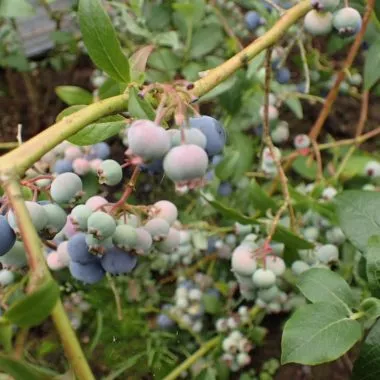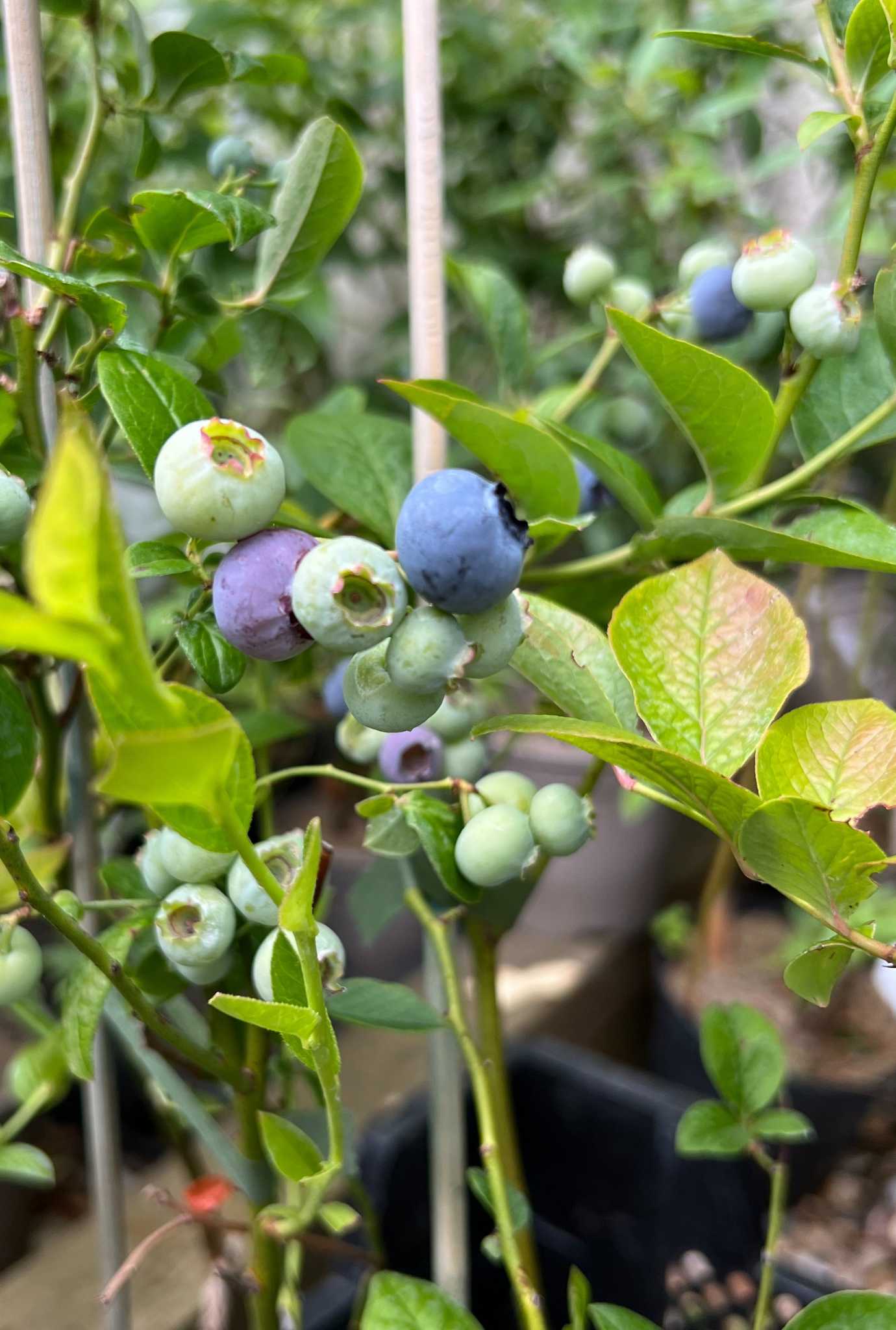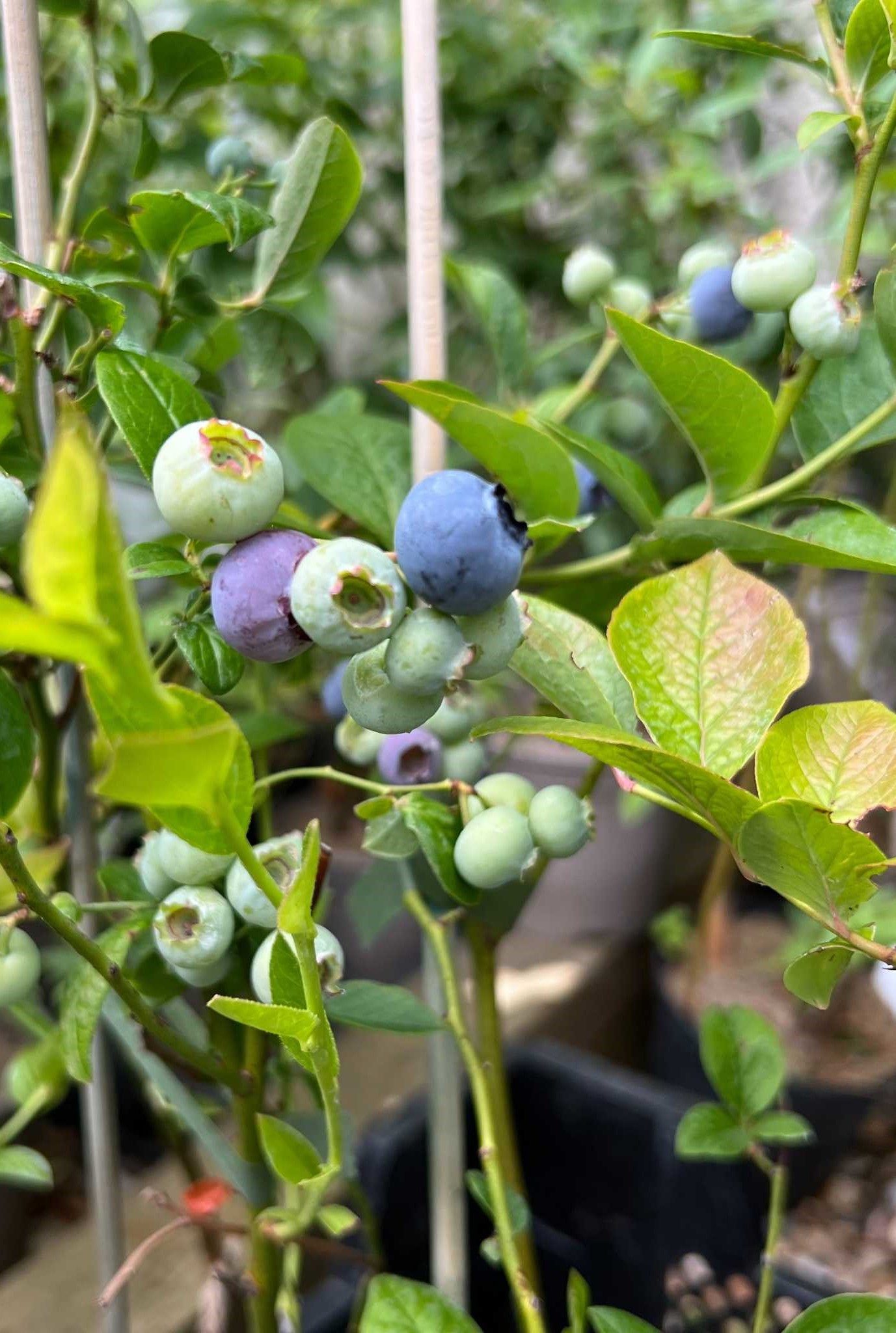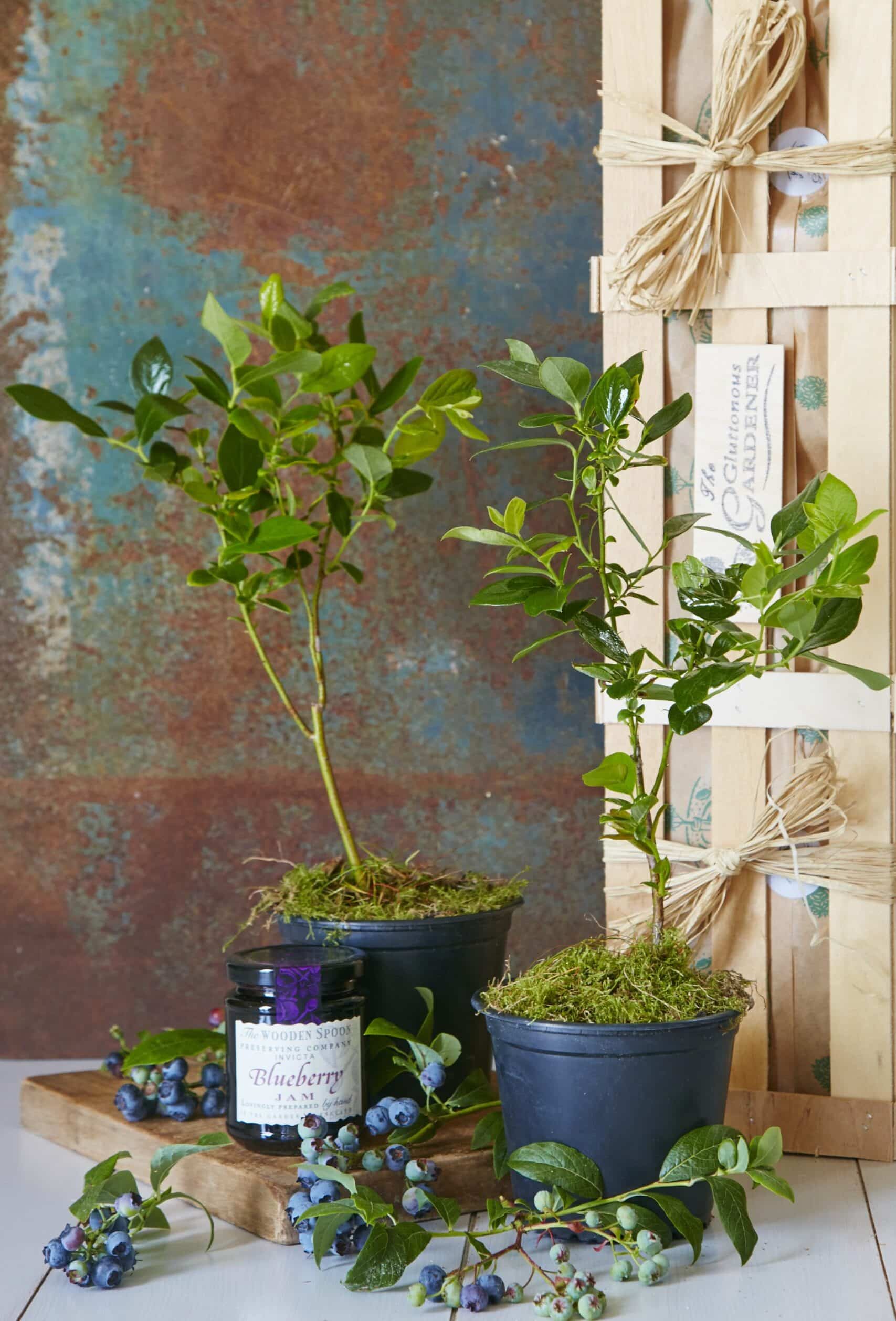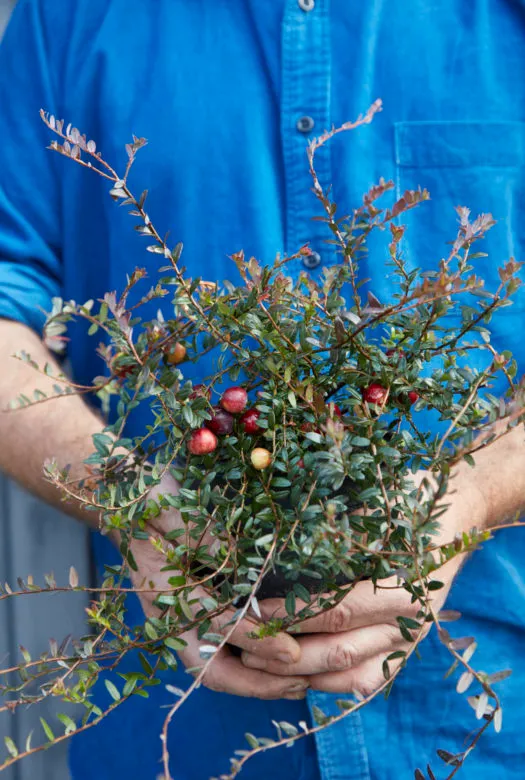Blueberry Bush
A Comprehensive Gluttonous Gardener Plant Care Guide
Blueberries aren’t a traditional British garden fruit, so although you’ll be familiar with shop bought blueberries arriving from faraway places such as Chile, you may be surprised to know that you could just as easily wander into your back garden and pick your own.
The delicious indigo-coloured fruits are remarkably simple to grow. They will thrive in a sunny border or in a pot on the balcony, so even the least green-fingered recipient and the humblest of gardens can produce a delicious home grown harvest.
Pretty white spring flowers are followed by the tasty fruits, ripening from pale green to beautiful deep blue. The joy doesn’t stop there as this generous plant has more to give. Autumn brings brilliant displays of blazing pink foliage as an additional prize after the last of the late summer berries have been devoured.
In a nutshell

Bush

Fruit

Happy in a pot

Hardy
Care Instructions

Planting
Blueberry bushes may be planted at any time of year as long as the ground isn’t frozen. Dig a hole twice the size of the root-ball, spreading the roots as you refill the hole to the base of the stem. Press the soil down with the heel of a boot. Though tolerant of light shade, blueberry bushes in the sunniest spots will produce the most abundant crops. A single blueberry plant will bear fruit, but your harvest will be bigger and better if more than one plant is grown to allow them to cross-pollinate.
Blueberry bushes require an acid soil to thrive, so if acid-loving rhododendrons, heather or camellia do not thrive in your garden then you can grow blueberries in pots of well-drained ericaceous compost. When you need to re-pot your blueberry, choose a pot just a few inches larger. Ensure the pot has adequate drainage holes and put some gravel or crocks in the bottom. We recommend using a terracotta, rather than plastic, container.

Watering
Wherever possible your blueberry bushes should be watered with rainwater. It’s important to water young plants well whilst the roots establish, and always to water deeply and regularly throughout the summer whilst the fruits swell and ripen.
Establish a regular summer watering routine because watering erratically may cause the fruits to shrivel or split. Container grown plants will require more careful watering and can rapidly parch in hot weather, especially in terracotta pots. They may also more easily become waterlogged so should stand on pot feet to allow water to drain away. The plants should be watered more sparingly throughout winter.

Feeding
Applying a high potash fertilizer such as liquid tomato feed throughout the growing season will inspire a bountiful harvest. Mulch each spring with chipped up pine wood, pine needles, bracken or leafmould to maintain moisture and soil acidity and improve your harvest.

Pruning
Blueberry bushes don’t require a great deal of maintenance, and any pruning should be done with care because too-vigorous or careless snipping could result in a poor harvest. Pruning should happen in winter after leaf-fall when the plant is dormant and whilst blueberries will not require pruning for the first few years of growth, you may wish to snip down any long and leggy canes to encourage branching growth.
Removing flower buds in the first year after planting will encourage strong stem growth and a more substantial plant to bear fruit for the following year. Once established, a winter prune should aim to remove any low-hanging, awkward or unproductive canes and thin out overcrowded branches.
Blueberries bear fruit on branches produced the previous year, so each year remove one or two of the oldest canes to make space for the more productive younger stems.

Winter
Whilst blueberry bushes are fairly hardy they suffer in particularly harsh winter conditions and may be damaged when low temperatures are accompanied by wet conditions. Young plants are especially vulnerable but can be sheltered with a layer of horticultural fleece. Plants grown in containers can be moved into a cool shed or garage, or protected by wrapping the pot in hessian or bubble wrap.

Fruiting
You can expect a modest harvest for the first few years, and with a little care and attention your crop will become increasingly abundant each summer. Fruits are ripe and ready to pick when they are large, deep-purple and can be pulled easily from the branches.
It’s wise to protect the bushes with netting to prevent peckish birds stealing your tasty blueberries. If you’ve produced an especially bountiful harvest you’ll be pleased to know that blueberries freeze well and make delicious jams, puddings and pies.
